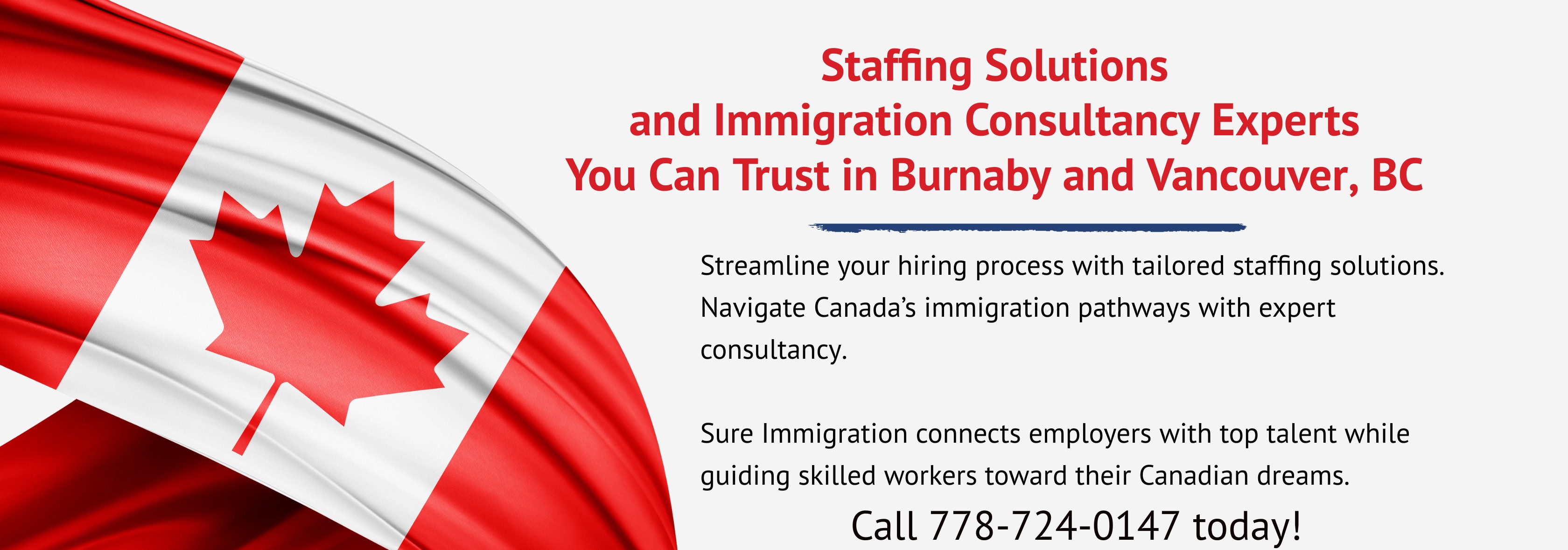
Canada offers a diverse range of pathways for temporary workers to transition to permanent residency (PR). If you are already working in Canada, you are in a prime position, as Canadian work experience is a crucial factor in many immigration programs. Understanding the available options and meeting the requirements can help you make Canada your permanent home.
In this guide, we’ll explore the main pathways to securing permanent residency while working in Canada.
1. Express Entry: The Fastest Route to PR
What is Express Entry?
Express Entry is Canada’s online immigration system that manages applications for three economic immigration programs:
- Canadian Experience Class (CEC) – For individuals with at least one year of skilled work experience in Canada.
- Federal Skilled Worker Program (FSWP) – For skilled workers with foreign work experience who meet the education and language requirements.
- Federal Skilled Trades Program (FSTP) – For skilled trades workers with Canadian or foreign work experience.
How to Apply for PR Through Express Entry
- Check Eligibility – Ensure you meet the minimum requirements for one of the programs.
- Create an Express Entry Profile – Submit details about your work experience, education, language proficiency, and other relevant factors.
- Obtain a Comprehensive Ranking System (CRS) Score – Your profile is evaluated against other candidates in the pool. The CRS score is a point-based system that assesses your profile based on factors such as age, education, work experience, and language proficiency. A higher CRS score increases your chances of receiving an Invitation to Apply (ITA).
- Receive an Invitation to Apply (ITA) – If you meet the CRS cutoff in a draw, you’ll be invited to apply for PR.
- Submit Your PR Application – Complete the application with supporting documents. Processing typically takes around six months.
Tip: Having a valid job offer, strong language skills, or additional Canadian education can improve your CRS score.
2. Provincial Nominee Programs (PNPs): PR Through Provincial Selection
What is a PNP?
Provincial Nominee Programs (PNPs) allow Canadian provinces and territories to nominate individuals for permanent residency based on their skills and job experience. Many PNPs prioritize workers already employed in their province.
How to Apply for PR Through a PNP
- Check Provincial Eligibility – Each province has different PNP streams based on labour market needs.
- Apply for a Nomination – Some streams require a job offer from a local employer, while others prioritize in-demand occupation.
- Receive a Provincial Nomination – If approved, you will receive 600 additional CRS points, effectively guaranteeing an ITA in Express Entry.
- Submit Your PR Application – Apply through Express Entry (if applicable) or the non-Express Entry process.
Tip: If you are working in a province and meet PNP requirements, applying through this route can significantly increase your chances of PR approval.
3. The Home Care Worker Immigration Program: PR for Caregivers
What is the Home Care Worker Immigration Program?
The Home Care Worker Immigration Pilots offer a pathway to permanent residency for qualified caregivers seeking to work in Canada. These pilots, designed to address the need for home care workers, provide a supportive environment for eligible applicants to settle in Canada while supporting children, seniors, and individuals with disabilities, ensuring they feel cared for and valued.
There are two main streams under this program:
- Home Care Worker Immigration Pilot: Child Care – For individuals providing childcare in private homes.
- Home Care Worker Immigration Pilot: Home Support – For individuals assisting seniors or persons with disabilities in their own homes.
Each pilot includes two application categories:
- Workers in Canada Stream – Open for applications starting March 31, 2025, for caregivers already working in Canada.
- Applicants Not Working in Canada Stream – Set to open at a later date for qualified applicants outside Canada.
How to Apply for PR as a Home Care Worker
- Secure a Job Offer – Obtain a valid, full-time job offer from a Canadian employer in the home care sector.
- Meet Eligibility Requirements – Ensure you fulfill the criteria, including work experience or training, language proficiency (CLB 4), and possession of a high school diploma or its equivalent.
- Prepare and Submit Your Application – Gather the required documents and apply through the appropriate stream when it becomes available.
- Wait for Processing and Approval – If successful, applicants will be granted permanent residency.
Tip: Since the program has an annual application cap, applying early increases the chances of securing a spot.
4. The Rural and Northern Immigration Pilot (RNIP): PR for Workers in Smaller Communities
What is RNIP?
The Rural and Northern Immigration Pilot (RNIP) helps skilled workers obtain PR while working in designated smaller communities.
How to Apply for PR Through RNIP
- Find a Job in a Participating Community – Employers in RNIP regions must offer you a full-time position.
- Receive a Community Endorsement – Once employed, the local community must support your application.
- Apply for Permanent Residency – Submit your PR application through the RNIP process.
💡 Tip: If you're working in a smaller city or town, check if it's part of the RNIP program for a possible PR pathway.
5. The Atlantic Immigration Program (AIP): PR in Canada’s East Coast
What is AIP?
The Atlantic Immigration Program (AIP) offers a straightforward pathway to permanent residence (PR) for workers in Canada’s Atlantic provinces—Newfoundland and Labrador, Prince Edward Island, Nova Scotia, and New Brunswick. With the support of an employer, the PR process is simplified, allowing you to focus on your work and future in Canada with confidence.
How to Apply for PR Through AIP
- Secure a Job Offer – Must be from a designated AIP employer.
- Get an Endorsement – The province must approve your employment offer.
- Submit Your PR Application – Apply for permanent residency through the AIP stream.
Tip: If you’re working in Atlantic Canada, this pathway simplifies the PR process and offers employer-driven support.
Final Thoughts: Take the Right Steps Toward PR
If you are working in Canada, you are already in a strong position to apply for permanent residency. Whether through Express Entry, a Provincial Nominee Program, or a specialized pathway such as the Home Care Worker Immigration Program or the Atlantic Immigration Program, this guide is designed to be your comprehensive resource, providing you with the necessary information to secure your future in Canada.
Need expert guidance? Contact Sure Immigration to start your PR journey today!
______________________________
The information in this blog post is accurate as of March 27, 2025. However, Canada has recently introduced changes to its immigration policies, including reductions in immigration targets and stricter regulations on temporary workers and students. These updates may impact the availability and requirements of specific immigration pathways. For the most up-to-date information and expert guidance, contact Sure Immigration at 778-724-0147.

.jpg)
.jpg)
.jpeg)
.jpeg)
.jpg)
.jpeg)
.jpeg)
.jpeg)
.jpeg)